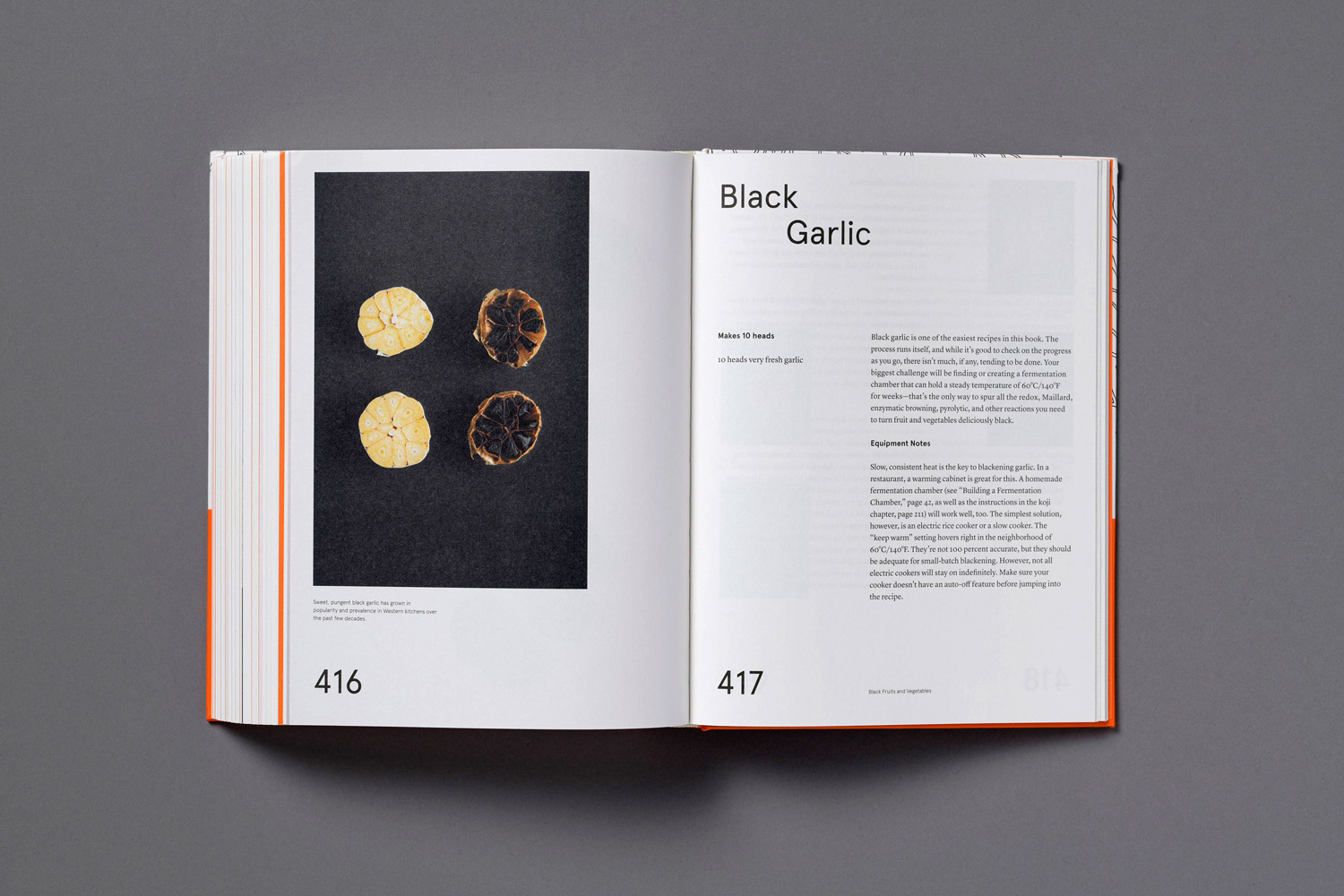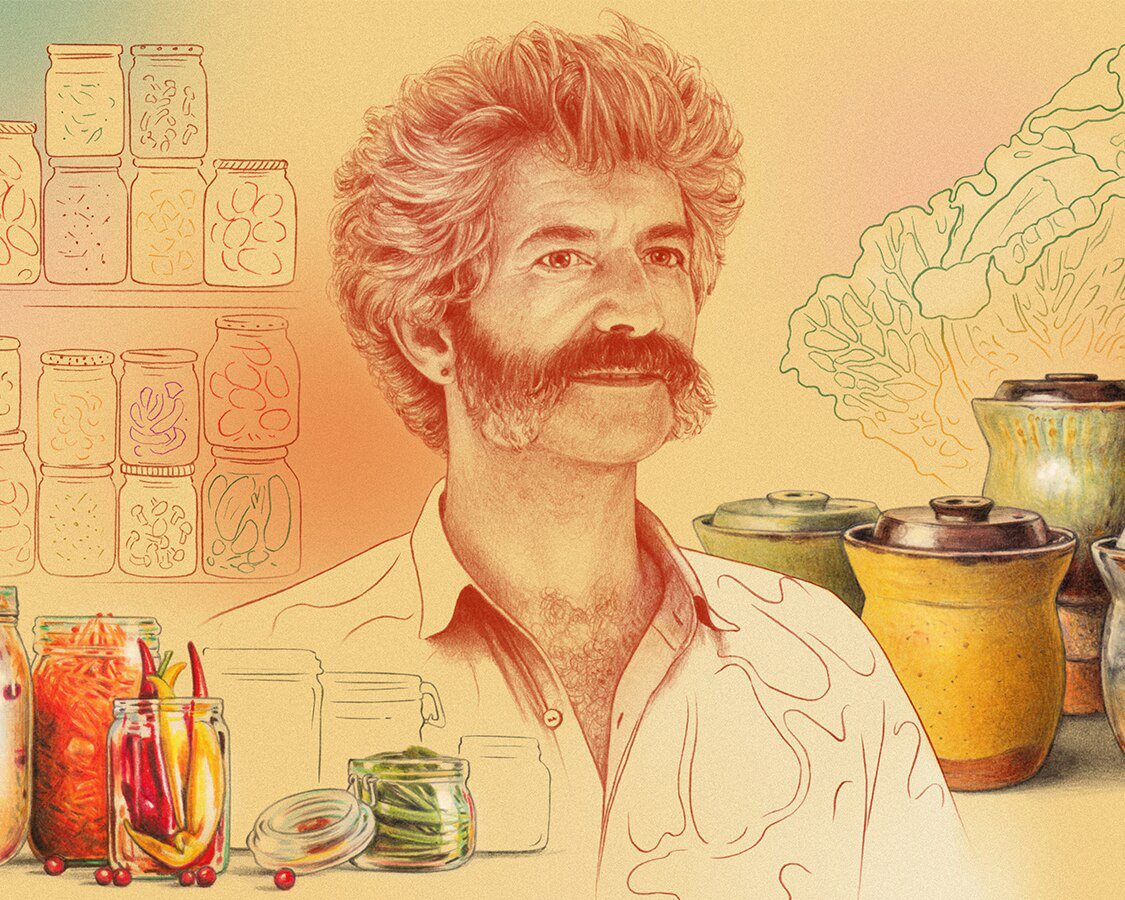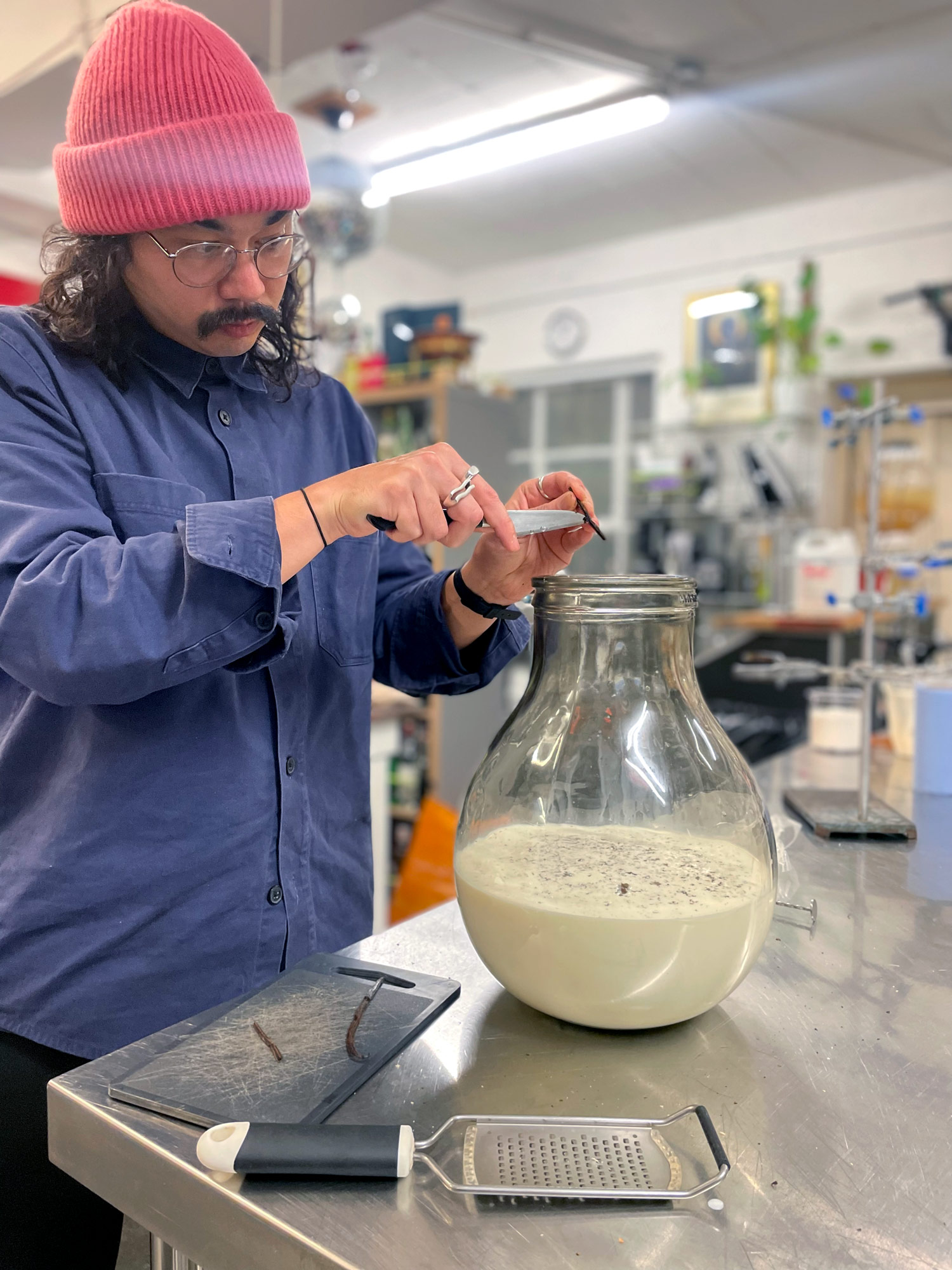BY STU BALE
I reckon I first started to get into fermentation around 2012/13 – I was at Strange Hill and we were writing a lot of the education modules for Diageo World Class. One of them was the ‘Micro Machines’ and it was all about the different kinds of fermentation, which was all completely new to me at the time.
I found it wildly exciting, I still do, but at that time it felt like I had stumbled on to the keys to the universe. It seemed groundbreaking and revolutionary, and it was a fucking buzz to get to mess around with all these new ways of manipulating flavour.
There are lots of aspects of fermentation that I enjoy. I certainly think there is an undeniable smugness that comes with drinking or tasting something delicious, when you also know that it’s really fucking good for you. Makes a change from the usual..
The most fascinating thing for me with fermenting things is that it’s kind of the perfect collision between art and science. There are two main practitioners I have ‘followed’ over the years, and I think they kind of offer polar opposite approaches. At the sciencey end, you obviously have Noma and Noma’s ‘Guide to Fermentation’ book, which is like an encyclopaedia. In Noma’s approach, everything is measured in grams and most temperatures are accurate to the .1 of a degree. This approach comes as a necessity to ensure consistency in what is often thought of as one of the best restaurants in the world. Alumni, such as David Zilber (@david_zilber) Jason Ignacio White (@microbes_vibes) and Arielle Johnson (@arielle_johnson), are also super inspirational at the more sciencey end of the spectrum. Dr Johnny Drain (@drjohnnydrain) is also one of my favourite characters I’d put in the scientific approach category for sure.
My second fermentation influence, Sandor Katz, has a very different approach. For a start his book is called the ‘Art of Fermentation’, and has a much more carefree and whimsical way with things. His recipes are much more kind of vague guidelines and encourage experimentation. Definitely in the more hippy camp, I love his whole sort of ethos and outlook on life. Sandor, an HIV survivor for 20 years, puts a lot of his good health down to eating and drinking vast quantities of fermented things. Increasingly, there is a lot of emerging science to encourage and support his thoughts – specifically that a healthy gut leads to a healthy body and healthy brain. It’s all quite exciting stuff, especially if you can make it delicious.
As is often the way with these things, I prefer an approach to fermentation kind of somewhere in the middle of these two schools. I make kombucha every week (with Rare Tea’s Jasmine Green as a base) and pretty much eyeball it – I don’t worry too much about the fermentation temperature. This approach works as it’s mainly just me drinking it (the rest of the Crucible team is not yet converted), and I’m not too fussed if it’s slightly different each week, as long as it’s within certain parameters. When summer comes and it’s a bit warmer, my kombucha ferments faster and can get too sour too quickly. To remedy this, I drop the sugar, or leave a bit less of the starter in from the previous week. Obviously, if the kombucha was meant as an ingredient for a cocktail on a menu somewhere, we would need to look at measuring things (or whatever) and controlling the temperature.
In terms of fermentation techniques, water kefir is another one we’ve had a lot of fun with over the years. The nature of it really works like a blank canvas for flavours, so it’s great for injecting that distinctive fermenty funk in quite a pliable way.
I think the sugar tax is one of the absolute fucking worst things to happen to drinks in the UK. And I don’t think I’m being overly dramatic – it’s a fucking tragedy, on a couple of different levels. Soft drinks objectively taste worse – all drinks that have changed their recipes, from Capri Sun, right through to Tory Fanta, taste like shite. To the point that I pretty much never buy them at all, and I used to pretty much survive on Capri Suns. Stevia tastes fucked. Aspartame fucks your brain. What a fucking shit show.
Cream soda is one of the drinks that comes off the worst with the fake sweetness debacle. It’s always been fairly weird tasting to begin with – kind of like a fizzy 99 in a can, but there was something deliciously naughty about it. And part of this was, no doubt, down to the massive amounts of sugar in it. Now, with all the chemical flavours, and chemical sweeteners on top, the vast majority of cream sodas just are undrinkable. It’s a fucking travesty.
Now, milk kefir was something that I was never really able to get into – no matter how good it was for you. Lumpy fizzy milk is just not the one for me, but having made it a few times, I knew part of the process was that it separates out and kind of curdles – you get a clear whey and the lumpy clots on the top. Boak.
I had an idea that I could use this to make cream soda, and you can see how I did it in the video below. I’m very lucky that I get to taste all kinds of weird shit all the time… and it’s pretty cool when even though at first glance something might seem disgusting and I have no idea what to do with it. Sometimes years down the line things come back into your head and all the bits fall into place.
Cream Soda
BY STU BALE
I reckon I first started to get into fermentation around 2012/13 – I was at Strange Hill and we were writing a lot of the education modules for Diageo World Class. One of them was the ‘Micro Machines’ and it was all about the different kinds of fermentation, which was all completely new to me at the time.
I found it wildly exciting, I still do, but at that time it felt like I had stumbled on to the keys to the universe. It seemed groundbreaking and revolutionary, and it was a fucking buzz to get to mess around with all these new ways of manipulating flavour.
There are lots of aspects of fermentation that I enjoy. I certainly think there is an undeniable smugness that comes with drinking or tasting something delicious, when you also know that it’s really fucking good for you. Makes a change from the usual..
The most fascinating thing for me with fermenting things is that it’s kind of the perfect collision between art and science. There are two main practitioners I have ‘followed’ over the years, and I think they kind of offer polar opposite approaches. At the sciencey end, you obviously have Noma and Noma’s ‘Guide to Fermentation’ book, which is like an encyclopaedia. In Noma’s approach, everything is measured in grams and most temperatures are accurate to the .1 of a degree. This approach comes as a necessity to ensure consistency in what is often thought of as one of the best restaurants in the world. Alumni, such as David Zilber (@david_zilber) Jason Ignacio White (@microbes_vibes) and Arielle Johnson (@arielle_johnson), are also super inspirational at the more sciencey end of the spectrum. Dr Johnny Drain (@drjohnnydrain) is also one of my favourite characters I’d put in the scientific approach category for sure.

The Noma Guide to Fermentation
My second fermentation influence, Sandor Katz, has a very different approach. For a start his book is called the ‘Art of Fermentation’, and has a much more carefree and whimsical way with things. His recipes are much more kind of vague guidelines and encourage experimentation. Definitely in the more hippy camp, I love his whole sort of ethos and outlook on life. Sandor, an HIV survivor for 20 years, puts a lot of his good health down to eating and drinking vast quantities of fermented things. Increasingly, there is a lot of emerging science to encourage and support his thoughts – specifically that a healthy gut leads to a healthy body and healthy brain. It’s all quite exciting stuff, especially if you can make it delicious.
As is often the way with these things, I prefer an approach to fermentation kind of somewhere in the middle of these two schools. I make kombucha every week (with Rare Tea’s Jasmine Green as a base) and pretty much eyeball it – I don’t worry too much about the fermentation temperature. This approach works as it’s mainly just me drinking it (the rest of the Crucible team is not yet converted), and I’m not too fussed if it’s slightly different each week, as long as it’s within certain parameters. When summer comes and it’s a bit warmer, my kombucha ferments faster and can get too sour too quickly. To remedy this, I drop the sugar, or leave a bit less of the starter in from the previous week. Obviously, if the kombucha was meant as an ingredient for a cocktail on a menu somewhere, we would need to look at measuring things (or whatever) and controlling the temperature.

Sandor Katz

In terms of fermentation techniques, water kefir is another one we’ve had a lot of fun with over the years. The nature of it really works like a blank canvas for flavours, so it’s great for injecting that distinctive fermenty funk in quite a pliable way.
I think the sugar tax is one of the absolute fucking worst things to happen to drinks in the UK. And I don’t think I’m being overly dramatic – it’s a fucking tragedy, on a couple of different levels. Soft drinks objectively taste worse – all drinks that have changed their recipes, from Capri Sun, right through to Tory Fanta, taste like shite. To the point that I pretty much never buy them at all, and I used to pretty much survive on Capri Suns. Stevia tastes fucked. Aspartame fucks your brain. What a fucking shit show.
Cream soda is one of the drinks that comes off the worst with the fake sweetness debacle. It’s always been fairly weird tasting to begin with – kind of like a fizzy 99 in a can, but there was something deliciously naughty about it. And part of this was, no doubt, down to the massive amounts of sugar in it. Now, with all the chemical flavours, and chemical sweeteners on top, the vast majority of cream sodas just are undrinkable. It’s a fucking travesty.
Now, milk kefir was something that I was never really able to get into – no matter how good it was for you. Lumpy fizzy milk is just not the one for me, but having made it a few times, I knew part of the process was that it separates out and kind of curdles – you get a clear whey and the lumpy clots on the top. Boak.
I had an idea that I could use this to make cream soda, and you can see how I did it in the video below. I’m very lucky that I get to taste all kinds of weird shit all the time… and it’s pretty cool when even though at first glance something might seem disgusting and I have no idea what to do with it. Sometimes years down the line things come back into your head and all the bits fall into place.